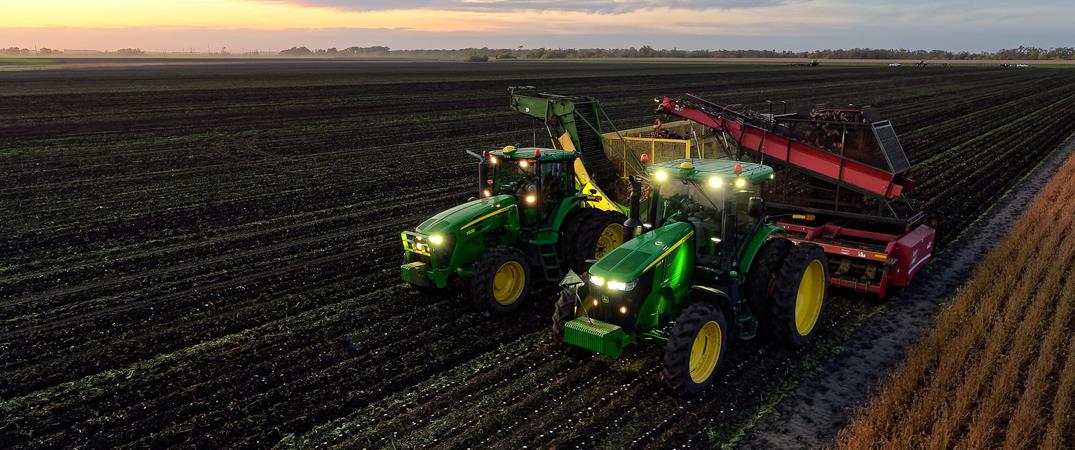
DEFOLIATOR CHECKLIST
Prepare Your Defoliator for Harvest
Preseason Preparations for the Defoliator
Time spent before harvest on the defoliator will increase productivity and reduce downtime during harvest.
- Check frame and hitch components for cracks. Weld and reinforce all cracks.
- Check and repair Power Take-Off shaft.
- Check all hydraulic hoses and cylinders. Repair or replace leaking couplers and all worn hoses.
- Check all gear boxes. Fill to correct level with proper lubricant.
- Check all drive belts. Replace any cracked or frayed belts.
- Check all bearings. Replace any bearing that seems worn-focus on the center hanger bearing on the twelve row machines.
- Check tire pressure. Maintain equal pressure across the machine.
- Check and replace worn flails on all drums.
- Check scalping equipment. Sharpen or replace all knives. Check bearings on disc scalpers.
Defoliator – Operation Checklist
The setup and operation of the defoliators has not received enough attention. Payments to growers can be dramatically affected because of the impact of defoliator operation on crown yield and quality.
- Set the defoliator for each field. Different varieties have different crown height.
- Adjust the forward speed to match the density of the canopy. As forward speed increases this gives insufficient time for flails to remove the petioles.
- Adjust the scalping equipment. Do not remove excessive crown material. Remove only the top third or a 50-cent piece size part of the crown.
- Adjust the height of the front of the machine to keep the steel flails above the crowns. This should be 1 inch above the tallest crown.
- Adjust the rear of the machine to clean the crowns and sweep each side of the row.
- As the weed pressure in a field increases, decrease the forward speed.
- Do not use equipment with only rubber flails after severe frost.
- Take time to train defoliator operators. A well-trained operator can make timely adjustments in the field to decrease harvest losses.
Please refer to the fact booklet "The Sugarbeet Harvest" for more details.
